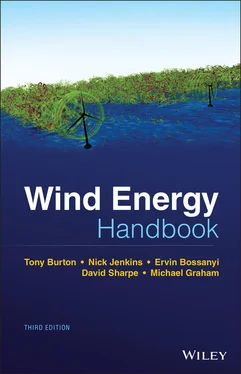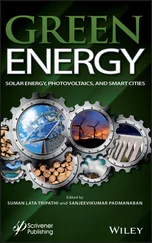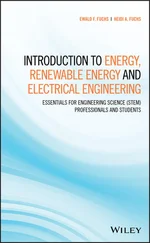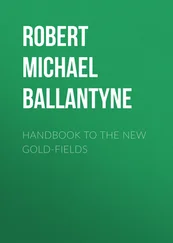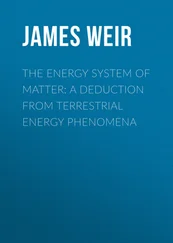A3.4 Laminar and turbulent boundary layers and transition
Unless the incident flow contains high intensity, small length scale turbulence, the flow just downstream of the attachment point forms laminar boundary layers . Eventually, unless the Reynolds number is rather low, due to boundary layer growth in thickness with downstream distance and the effects of adverse pressure gradient on the velocity profile, laminar boundary layers become unstable, and the instabilities grow into turbulence. This is the transition point and downstream of it the boundary layer becomes a turbulent boundary layer ; see Figure A3.5. The transition point on an aerofoil has a strong influence on the drag of the aerofoil and on the angle of attack at which stall starts to develop. Its location depends strongly on (i) the Reynolds number and boundary layer thickness, (ii) the surface pressure distribution, particularly the strength of adverse pressure gradient, (iii) the roughness of the surface, and (iv) the turbulence in the external stream. Points (i) and (ii) being large lead to instability growth, (iii) and (iv) to finite sized disturbances that seed the growth of turbulence. An additional very potent factor (v) in promoting transition is the occurrence of very small regions of separation known as separation bubbles . Because a shear layer profile with a point of inflexion is in practice immediately unstable, both separation bubbles and laminar boundary layers in the regions of strong adverse pressure gradient just after a very low‐pressure peak can be regarded for practical purposes as giving rise immediately to transition unless they have completely separated first. Unfortunately, because of the very small scales involved, direct simulation of transition even on a simple aerofoil profile requires very large computing capacity and in practice simple semi‐empirical methods such as the e n method (where n ∼ 9, White 1991) are used to predict its occurrence. After transition the boundary layer becomes turbulent and, because of the greatly enhanced mixing that occurs, generates a fuller profile with much higher shear but only within a thin region adjacent to the body surface. The effects of this are to increase the skin friction considerably (therefore the skin friction drag increases and the boundary layer thickens more rapidly) but also to oppose more strongly the effects of adverse pressure gradient in causing separation. Turbulent boundary layers are much more resistant to separation. The outer limit of a boundary layer beyond which viscous shear is negligible is not a precise interface but usually taken as the surface at which the mean velocity has reached 99.5% of the ‘external’ flow velocity. This is a difficult state to define precisely if the external pressure field is varying, as is, for example, the case with the ABL. Also, in the case of a turbulent boundary layer the instantaneous interface is highly corrugated in space and time due to the turbulent eddies.

Figure A3.5 Laminar and turbulent boundary layers.
The coefficient of drag, therefore, in these cases can vary with Reynolds number in a complex fashion. Figure A3.6shows the classic result for a circular cylinder. At moderate to low Reynolds numbers (small diameters and/or low speeds), the boundary layers remain laminar, and separation takes place just ahead of 90° from the front attachment point. As the Reynolds number increases to a critical value, transition to turbulence that is taking place in the wake moves upstream to the separation point, and the turbulent separated layer immediately reattaches, forming a small separation bubble. Downstream of this is a turbulent boundary layer that does not separate until much further round the cylinder, forming a narrow wake, and the drag coefficient falls abruptly. With further increase of Reynolds number, turbulent separation continues, and the drag coefficient slowly increases again. This effect of Reynolds number on separation and forces is usually less complex on many other types of body, but particularly when separation bubbles are formed; as can happen in many aerofoil stall regimes, the behaviour of the force characteristics with Reynolds number can be complex and abrupt.

Figure A3.6 Variation of C dwith Re for a long cylinder.
Transition to turbulence is highly sensitive to levels of small length‐scale turbulence or high frequency acoustic noise in the incident flow (by‐pass transition) and to elements or distributed roughness of the body surface. It can be artificially triggered by deliberately roughening the surface or distributing a band of roughness elements or by fixing a ‘trip wire’ to the surface. Insect deposition on the leading edges of wind turbine blades may similarly trigger transition.
Streamlined bodies such as aerofoils taper gently in the aft region so that the adverse pressure gradient is fairly small and separation is delayed until very close to the trailing edge. This produces a very much narrower wake and a very low drag because significant pressure drag is avoided.
On an aerofoil at higher angles of attack, stall onset may be delayed by earlier transition in the suction surface boundary layer. The phenomenon may also include the occurrence of separation bubbles where a laminar separation is followed immediately by transition in the separated shear layer and then turbulent mixing causing reattachment and formation of a ‘bubble’ on the surface. Because of these effects, the onset of turbulence in the boundary layer and particularly the occurrence of separation bubbles controls the angle of attack at which an aerofoil stalls and the type of stall that occurs. Because turbulence in the free stream and surface roughness both tend to promote transition, they can both affect the lift and drag of bodies. In the case of turbulence, the length scale must be small to affect the boundary layer transition. For an aerofoil the effects are particularly influential around the stall region, and on many aerofoils that operate in regions of dirty air close to the ground, it is advisable to periodically clean accumulated dirt or insects from the leading edge regions. More modern designs seek profiles that are relatively insensitive to surface roughness around the leading edge. As on all bodies on which separated flow occurs, early transition when it delays or suppresses separation reduces the pressure drag.
A useful categorisation of aerofoil stall types is given by Gault (1957).
A3.5 Definition of lift and its relationship to circulation
The lift on a body immersed in a flow is defined as the force on the body in a direction normal to the incident flow direction.
In subsonic steady flow, a body only generates lift if the flow incorporates a circulatory component about the body. The body section is then said to have circulation . This type of flow may be illustrated by that which occurs about a spinning circular cylinder in a uniform incident flow field of velocity U . In the resulting flow field, as shown in Figure A3.7, the velocity above the cylinder is increased and the static pressure reduced. Conversely, the velocity beneath is slowed and the static pressure increased. An upwards force on the cylinder results with a strong component normal to the free stream, the lift force.
The phenomenon of lift generated by a spinning cylinder is known as the Magnus effect after its original discoverer and explains, for example, why spinning balls veer in flight.
Читать дальше
